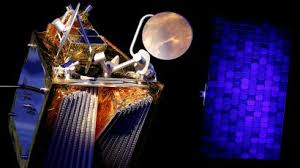
Breaking News
 Candace Owens FACE TO FACE meeting with Erika Kirk Goes Viral
Candace Owens FACE TO FACE meeting with Erika Kirk Goes Viral
 The Global Push for Government Mandated Digital IDs And Why You Should Worry
The Global Push for Government Mandated Digital IDs And Why You Should Worry
 Update on the homestead...Turning dollars into completed projects.
Update on the homestead...Turning dollars into completed projects.
 Tanning beds mutate nearly your entire skin and triple melanoma risk
Tanning beds mutate nearly your entire skin and triple melanoma risk
Top Tech News
 This tiny dev board is packed with features for ambitious makers
This tiny dev board is packed with features for ambitious makers
 Scientists Discover Gel to Regrow Tooth Enamel
Scientists Discover Gel to Regrow Tooth Enamel
 Vitamin C and Dandelion Root Killing Cancer Cells -- as Former CDC Director Calls for COVID-19...
Vitamin C and Dandelion Root Killing Cancer Cells -- as Former CDC Director Calls for COVID-19...
 Galactic Brain: US firm plans space-based data centers, power grid to challenge China
Galactic Brain: US firm plans space-based data centers, power grid to challenge China
 A microbial cleanup for glyphosate just earned a patent. Here's why that matters
A microbial cleanup for glyphosate just earned a patent. Here's why that matters
 Japan Breaks Internet Speed Record with 5 Million Times Faster Data Transfer
Japan Breaks Internet Speed Record with 5 Million Times Faster Data Transfer
 Advanced Propulsion Resources Part 1 of 2
Advanced Propulsion Resources Part 1 of 2
 PulsarFusion a forward-thinking UK aerospace company, is pushing the boundaries of space travel...
PulsarFusion a forward-thinking UK aerospace company, is pushing the boundaries of space travel...
 Dinky little laser box throws big-screen entertainment from inches away
Dinky little laser box throws big-screen entertainment from inches away
 'World's first' sodium-ion flashlight shines bright even at -40 ºF
'World's first' sodium-ion flashlight shines bright even at -40 ºF
OneWeb Launched Six Satellites Today as Part of a 600 Mega-constellation

OneWeb will launch into a 450-500km altitude, which is above the International Space Station. From there, our satellites will climb to an operational orbit of 1,200km.
How will OneWeb operate alongside proposed constellations which seek to operate in the same altitude?
OneWeb has demonstrated its willingness to reach agreements with other operators to ensure orbital safety. We think that constellations of more than 100 satellites should be separated by a minimum of 125km between the center of their orbits. This is necessary to safely and sustainably manage large constellations.



